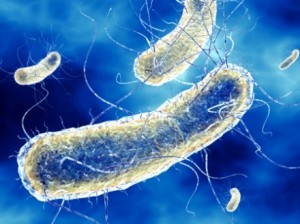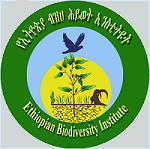 Bioprospecting Potential of Bacillus licheniformis for Access and Benefit Sharing
Bioprospecting Potential of Bacillus licheniformis for Access and Benefit Sharing
| Release date | 11/04/2019 |
|---|---|
| Contributor | IT Team EBI |
| Keywords | Bacillus licheniformis, B. licheniformis, enzymes, B. subtilis |
Bioprospecting Potential of Bacillus licheniformis for Access and Benefit Sharing

Reviewed by Rahel Tilahun
Genetic Resources Access and Benefit Sharing Directorate
March 2019
1. Introduction
Ethiopia is a country endowed with a microbial, plant, and animal biodiversity from which Genetic Resources could be identified for access and benefit sharing. Ethiopia has been applying the two goals of the convention on biological diversity (CBD) which are the sustainable use and fair and equitable sharing of the benefits arising out of the use of genetic resources based on according to Proclamation No 482/2006 and Regulation 169/2009 (Access to Genetic Resources and Community Knowledge and Community Rights). Genetic Resources Access and Benefit Sharing Directorate have been working on introducing genetic resources which could be applicable for bioprospecting and ABS agreements since 2011.
Consequently, the aim of this review is to promote the use of Bacillus licheniformis for biotechnological, biopesticide, medical and probiotics application to any company involved in bioprospecting or a person interested to work on it.
2. Genome structure
Bacillus licheniformis contain ATCC 14580 genome, with a circular chromosome of 4,222,336 bp (base pairs) which has 4,208 predicted protein-coding genes (average size of 873 bp), 7 rRNA operons, and 72 tRNA genes in its nucleotide sequence. The GC content of the bacterium is 46.2% and without plasmids. B. licheniformis has large chromosome regions that are similar to Bacillus subtilis and Bacillus halodurans. About 80% of the coding sequences of B. licheniformis contain B. subtilis orthologs, making it part of the subtilis group. Although they are similar to B. subtilis, they differ in the amount and location of transposable elements, prophages, secondary metabolic pathway operons, and extracellular enzymes (Rey et al., 2004).
3. Cell structure and metabolism
Bacillus licheniformis is a rod-shaped, Gram-positive bacterium color (Veith et al., 2004). It tends to form spores in soil which makes it desirable to be used for the industrial purposes such as the production of enzymes, antibiotics, and small metabolites. It produces a variety of extracellular enzymes that are associated with the cycling of nutrients in nature.
Its optimal growth temperature is 50°C, but it can also survive at much higher temperatures. Its optimal temperature for enzyme secretion is 37°C. This bacterium can survive harsh environments by turning into spore-form; when conditions are good, it will turn back into a vegetative state. B. licheniformis produces a protease that can survive at high pH levels. This protease is a desired ingredient in laundry detergent due to its ability to be used in low temperatures, which prevents shrinkage and fading colors (Veith et al., 2004).
4. Distribution and Ecology
Bacillus licheniformis is a saprophytic bacterium found in soil, bird feather, and other natural environments. It can form spores in soil when it is starved. These spores are quite tolerant of radiation, cold, heat, and other environmental stresses. Under optimum condition the spores will germinate and produce vegetative cells (Veith et al., 2004).
B.licheniformisproduces a variety of extracellular enzymes that are associated with the cycling of nutrients in nature. It is a non-pathogenic soil organism that is mostly associated with plant and plant materials in nature. Although this bacterium is commonly isolated from is soil, it is believed that B. licheniformiscan actually be isolated from practically anywhere since it produces highly resistant endospores that are spread around with dust.
Ecologists are studying the degradable effects of B. licheniformis on bird feathers. It is believed that this bacterium is involved in the evolution of molting and patterns of color in birds due to its feather-degrading capability.
B.licheniformisis also known to cause food poisoning in humans as they highly contaminate products such as raw milk, dairy, vegetables, processed baby foods, and cooked meats.
5. Significance
Bacillus licheniformis can degrade many substrates due to its capacity to produce and secret hydrolytic enzymes, a characteristic which makes it an interesting bacterium for industrial application (Salkinoja-Salonen et al., 1999).
5.1. Application in Biotechnology
By fermenting Bird feathers with B. licheniformis the large amounts of non-digestible proteins found in the feathers can be turned into a feather meal for livestock which is cheap and nutritious (Snoke and Cornell, 1965).
B.licheniformiscan also give more information about the evolution of molting and patterns of color in birds due to its feather-degrading capability. Ecologists are looking for signs of association between the plumage feathers and B. licheniformis activity.
The characteristic feature of B. licheniformis to grow in alkaline conditions and produce a protease enzyme make it an interesting bacterium in laundry detergent industry. The protease having an optimum pH at around 9 and 10 is desirable since it can remove protein-comprised dirts in clothes and prevents fading colors and shrinkage because it allows lower temperatures (Snoke and Cornell, 1965).
5.2. Biopesticide
Bacillus licheniformis is the active ingredient of Novozymes Biofungicide Green Releaf, a microbial fungicide for use on lawns, conifers, tree seedlings, ornamental turf and ornamental plants in greenhouse, nursery sites, and outdoor.
Bacillus licheniformis, a common soil bacteria, contributes to nutrient cycling and displays antifungal activity. Most of B. licheniformis in soil are unknown and likely vary from soil to soil; the use of B. licheniformis at current label rates is not expected to add substantially to the effects of the naturally occurring Bacillus populations.
5.3. Medical use
B.licheniformiscan produce antibiotic called Bacitracin. Bacitracin is a narrow spectrum antibiotic which is composed of a mixture of the cyclic polypeptides and it targets Gram-positive organism’s Staphylococcus aureus, staphylococcus epidermidis, streptococcus pyogenes that are known to cause skin infections (http://www.toku-e.com/Assets/MIC/Bacitracin.pdf).
Callow and Hart (1946) first reported an antibiotic called licheniformin, which is produced by a strain of Bacillus licheniformis. The isolation of highly concentrated material and its chemical and biological properties were described briefly by Callow, Glover and Hart (1947) and in more detail by Callow, Glover, Hart and Hills (1947). Cultures with similar biological and chemical properties were obtained only from those spore-bearing aerobic organisms (11 of 81 cultures examined) which were identified as B. licheniformis by the criteria of Gibson.
5.4. Probiotics
Bacillus licheniformis is a spore-forming probiotic which can be used in conjunction with other probiotic bacillus species, such as Bacillus subtilis (Symmank et al., 2002). As a probiotic it is used to perform the same function as it does in Bacitracin to prevent the growth of harmful bacteria, to promote better immune function.
5.5. Other uses
As Bacillus licheniformis is able to produce protease it is capable to absorb and convert the nutrients into soldiers against bad bacterial growth. The microbiome of the human gut needs both the bacteria and their enzymes to maintain a healthy balance. Taking Bacillus licheniformis supplements resulted in improved digestive health and stabilized bowel patterns. Bacillus licheniformis produces a spectrum of B vitamins in the digestive tract, including folic acid and biotin (Symmank et al., 2002).
6. References
Callow, R.K. and Hart, P.D.A (1946). Antibiotic material from Bacillus licheniformis (Weigmann, emend. Gibson) active against species of Mycobacterium. Nature Lond. 157: 334-335.
Callow, R.K., Glover, R.E. and Hart, P.D.A. (1947). Licheniformin, the antibiotic material from Bacillus licheniformis; concentration and some chemical and biological properties. Biochem. J . 41: 1125.
Callow, R.K., Glover, R.E., Hart, P.D.A. and Hills, M. (1947). Licheniformin, an antibiotic substance from Bacillus licheniformis active against Mycobacterium tuberculosis. Brit. J. exp. Path. 28: 418.
Rey, M.W., Ramaiya, P., Nelson, B.A., Brody-Karpin, S.D., Zaretsky, E.J., Tang, M., Lopez de Leon, A., Xiang, H., Gusti, V., Clausen, I.G., Olsen, P.B., Rasmussen, M.D., Andersen, J.T., Jorgensen, P.L., Larsen, T.S., Sorokin, A., Bolotin, A., Lapidus, A., Galleron, N., Ehrlich, S.D. and Berka, R.M. (2004). Complete genome sequence of the industrial bacterium Bacillus licheniformis and comparisons with closely-related Bacillus species. Genome Biol. 5(10): 77.
Salkinoja-Salonen, S., Vuorio, R., Andersson, M.A., Kämpfer, P., Andersson, M.C., Honkanen-Buzalski, T. and Scoging, A.C. (1999). Toxigenic Strains of Bacillus licheniformis related to Food Poisoning. Appl. Environ. Microbiol. 65(10): 4637–4645.
Snoke, J.E. and Cornell, N. (1965). Protoplast lysis and inhibition of growth of Bacillus licheniformis by Bacitracin. J. Bacteriol. 89(2): 415–420.
Symmank, H., Franke, P. and Saenger, W. (2002). Modification of biologically active peptides: Production of a novel lipohexapeptide after engineering of Bacillus subtilis surfactin synthetase. Protein Eng. 15: 913–921.
Veith, B., Herzberg, C., Steckel, S., Feesche, J., Maurer, K. H., Ehrenreich, P., Bäumer, S., Henne, A., Liesegang, H., Merkl, R., Ehrenreich, A. and Gottschalk, G. (2004). The complete genome sequence of Bacillus licheniformis DSM13, an organism with great industrial potential. J. Mol. Microbiol. Biotechnol. 7(4): 204-211.
Please note that this information has expired.
